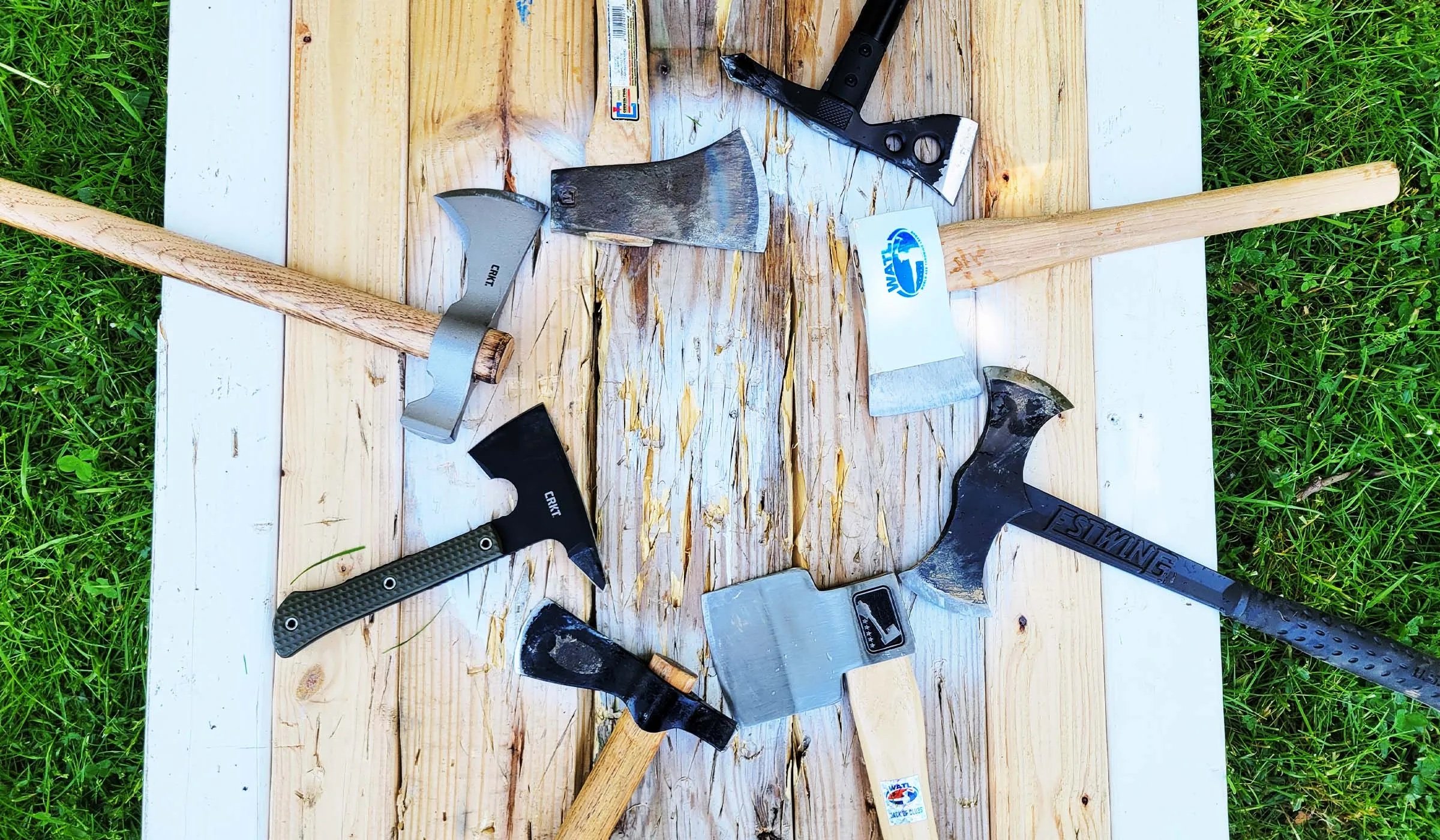
Choosing the Right Axe for the Perfect Throw
Find out more about axes for axe throwing, everything you need to know to get started.
INTRODUCTION
Axe throwing has quickly become one of the most exciting recreational activities in the UK, with dedicated venues popping up across the country and more people setting up their own throwing targets at home. Whether you’re a beginner or an experienced thrower, choosing the right axe can make all the difference in your performance and overall experience.
At The Axe Throwing Supply Company UK, we specialise in high-quality axes designed specifically for axe throwing. In this guide, we’ll explore everything you need to know about selecting the perfect axe for the sport, from weight and balance to handle material and design.
What Makes a Good Axe for Axe Throwing?
Not all axes are created equal, and the ones used for axe throwing are specially designed for precision, balance, and consistency. Unlike traditional chopping axes, throwing axes are crafted to rotate smoothly in the air and stick into the target with accuracy. Here are the key factors to consider when choosing an axe for axe throwing:
1. Weight and Balance
The ideal weight for a throwing axe typically falls between 600g and 1.5kg (1.5 to 3 pounds).
A properly balanced axe ensures even rotation, making it easier to predict and control your throws.
Lighter axes are great for beginners as they are easier to handle, while slightly heavier axes offer more power and impact.
2. Handle Length
Handle length plays a crucial role in how the axe rotates.
Most throwing axes have a handle between 12 and 19 inches (30-50cm), with longer handles requiring a slightly different throwing technique.
Shorter handles offer more control, making them ideal for one-handed throws.
Longer handles provide more momentum and can be useful for heavier axes.
3. Blade Shape and Edge
A throwing axe should have a single-bit blade (one sharp edge) rather than a double-bit blade, which can be harder to control.
The edge should be sharp enough to stick to the target but not so razor-sharp that it becomes dangerous or chips easily.
4. Handle Material
Handles are usually made from wood, composite, or metal, each with its own benefits:
Wood (Hickory or Ash) – Traditional, absorbs shock well, and offers a natural grip.
Composite (Fiberglass or Plastic Blends) – Durable and resistant to weather changes.
Metal – Extremely durable but can transfer more vibration to your hands.
5. Axe Head Design
The axe head should be well-secured to prevent loosening after repeated throws.
A straight blade edge provides better sticking power and consistency compared to curved edges.
Types of Axes for Axe Throwing
Depending on your skill level and throwing style, different axes can provide unique advantages. Here are some of the most popular types of throwing axes:
1. Hatchets (Beginner-Friendly)
Small, lightweight, and easy to control.
Ideal for one-handed throws.
Best suited for newcomers to axe throwing.
2. Tomahawks
Slim and lightweight, allowing for fast, controlled throws.
Often used in competitions due to their precision.
Great for trick shots and freestyle throwing.
3. Competition Throwing Axes
Designed for league and tournament use.
Meets World Axe Throwing League (WATL) and International Axe Throwing Federation (IATF) standards.
Offers a perfect balance of weight, size, and stickability.
4. Double-Bit Axes (Advanced Users)
Features two blades, offering versatility.
Requires more skill to control and is not used in most standard axe throwing competitions.
How to Choose the Right Axe for You
When selecting an axe for axe throwing, consider:
Skill Level – Beginners should start with lightweight, short-handled axes, while advanced throwers may prefer heavier competition-grade axes.
Throwing Style – One-handed or two-handed throws may influence handle length preference.
Frequency of Use – If you throw often, investing in a high-quality axe with a durable handle and head attachment is worth it.
If you’re unsure which axe to choose, The Axe Throwing Supply Company UK offers expert advice to help match you with the perfect throwing axe for your needs!
Why Buy Professional Throwing Axes?
While it may be tempting to use any axe lying around, professional throwing axes are designed with safety, balance, and durability in mind. Using a standard wood-chopping axe for throwing can be dangerous and frustrating, as they are too heavy and not built for smooth rotation.
At The Axe Throwing Supply Company UK, we provide axes designed specifically for axe throwing, ensuring:
Better accuracy – Balanced axes rotate predictably for consistent throws.
Long-lasting durability – High-quality materials withstand repeated use.
Safety-first design – Throwing axes reduce the risk of mishandling compared to standard utility axes.
Maintaining Your Throwing Axe
To keep your axe in top condition:
Keep the blade sharp – A dull axe won’t stick properly to the target.
Store it properly – Keep your axe in a dry place to prevent rust.
Inspect the handle – Wooden handles can wear down over time and may need replacing.
Taking care of your axe will ensure it lasts for years of accurate, satisfying throws!
Final Thoughts: The Right Axe Makes All the Difference
Choosing the right axe for axe throwing can transform your experience from frustrating to fun. Whether you're just starting out or looking for competition-ready gear, investing in a high-quality throwing axe is the key to accuracy, safety, and enjoyment.
At The Axe Throwing Supply Company UK, we offer a wide range of premium throwing axes to suit all skill levels. Browse our collection today and take your axe throwing skills to the next level!










